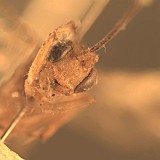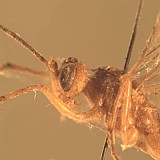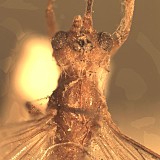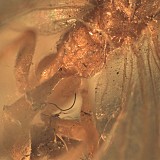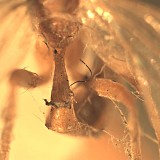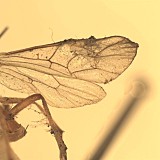Neurogenia longicornis (Cameron, 1911)
This species is similar in many respects to Neurogenia ocellaris but N. longicornis is known for certain only from females and N. ocellaris only from males. In this regard, we have examined a putative male of longicornis that is much smaller (and with only 40 flagellomeres), that has the flagellum completely dark unlike the pale flagellum of ocellaris but the M+Cu spur is shorter and not bifurcate at the apex. The putative male is from Zambia, from the same locality as one of the typical females.
Color: mostly uniformly pale yellow brown; flagellum dark throughout, with basal flagellomeres very slightly darker in lateral view than more distal flagellomeres.
Images are of the poorly preserved holotype from BMNH; the color of the specimen is natural, but the background has not been altered to enhance these images.
There are no specimens currently determined for this OTU, or those specimens determined for this OTU are not yet mappable.
This material is based upon work supported by the National Science Foundation under Grant Number DEB 0328922 with REU supplements DEB 0723663 and number 1026618.
Any opinions, findings, and conclusions or recommendations expressed in this material are those of the author(s) and do not necessarily reflect the views of the National Science Foundation.

